TS
boleroes11
Overview of The US Technology (Robot).
I fight for the body electric! Terrestrial mobile robots in today's and tomorrow's battlefield.
Overview of the U.S. technology
Today, 09:32

Small robot SUGV (Small Unmanned Ground Vehicle) is inspected for Dona Ana range during exercises conducted by soldiers of the 2nd Battalion of combined arms to test experimental technologies
Everyone is talking about fighting robots. From Hollywood blockbusters to the battlefields of Iraq and Afghanistan, robots - is a hot topic discussions and more expensive part of the military budgets of the armed forces around the world. But what can realistically be expected from them? But more importantly, what we would like them to do?
On the pages of science fiction books robots often presented harbingers of the future. In 1962 Ray Bradbury wrote a story called "Body Electric sing!". In his story a widow with three children chooses robot nanny for their children. Robot "grandmother" soon favor with the two younger children, but only causes resentment among younger girl named Agatha. "Grandma" is trying to establish itself before Agatha, she demonstrates an act of selflessness, risking their lives for Agatha, thereby indicating that it may be more humane than most people. "Grandma" Ray Bradbury shows robots as heirs of the best sides of humanity. Today, robots are vital, they help soldiers survive on the battlefield, changing understanding of how wars are conducted. Today, to paraphrase Bradbury, you can say, "I'm fighting for electrical body."
Dawn terrestrial mobile robots (HMP)
There are two basic principles of the modern era, which are rapidly changing methods of armies future wars: the first - is the ability of people to transform science into technology; second - rate of acceleration with which this transformation takes place. The first principle - it is a question of mental abilities, while the second - a function of the rapid progress of computing power. The combination of intellectual power and growing computing power has created a "brave new world" of military robots for ground war. Use of military robots in battle is a "qualitatively new" and often contradictory transformation of war, these robots are not just a weapon, they are designed to replace human beings.
Although robots in 2009 while committing baby steps compared to the science-fiction stories, they have already proved their worth in battle. Initial NMR technology have been deployed in the first battles in Iraq and Afghanistan and spread rapidly in the next few years; ground robots have been widely used in the operations of explosive ordnance disposal (AFP) and the numerous improvised explosive devices. To date, more than 7,000 ground robots deployed U.S. forces in their areas of deployment, they have become an integral part of combat operations.
At one time in an interview, Vice Admiral, retired president, according to government and industrial robots iRobot company Joseph Dyer stressed the importance of soldiers replaced the HMP, at least in certain combat situations. "Until HMP soldiers went into the cave to check for enemy fighters and military equipment. These rope was tied, in case something goes wrong ... so that colleagues can pull them out. With HMP, soldiers can now let the robots first, remaining at a safe distance. This is important due to the fact that half of all the losses occur during the initial contact with the opponent. Here, the robot - is one of those who goes first. " Admiral Dyer recalls that in late 2005 air assault expeditionary force checked more than 40 new technologies at Fort Benning. "Secretary of the Army Expeditionary Forces commander asked: If you could choose two technologies for use now that you have chosen? Commander replied, small HMP (SUGV) and RAVEN. When asked why, he replied, among other things, I want to control the situation. I want to have the eye of God (UAV RAVEN) and near-personal review (SUGV) on the battlefield. "
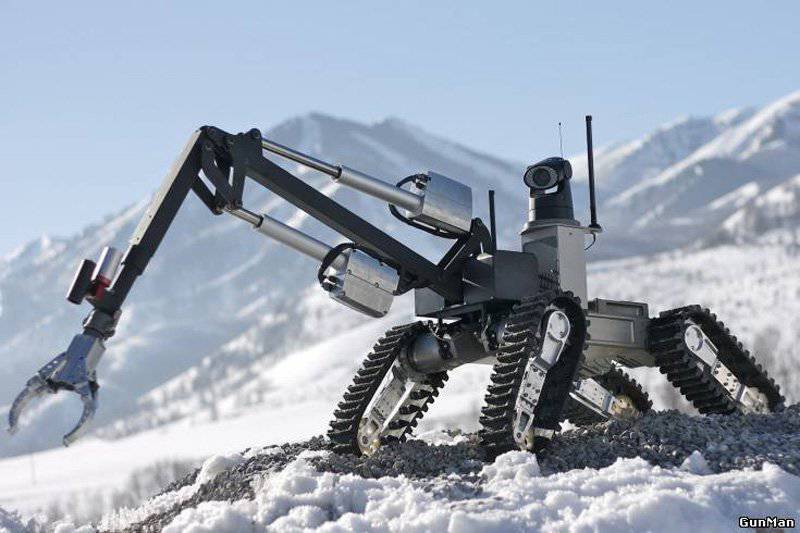
Robot CHAOS, manufactured by ASI (Autonomous Solutions Inc.) For the research center armored TARDEC, pictured during winter testing

In the robot MATTRACKS T4-3500 used crawler technology that provides mobility and good grip in mud, sand, snow, swamp and tundra. TARDEC worked with the company on a project Mattracks caterpillar HMP in the development of the chassis and the drive
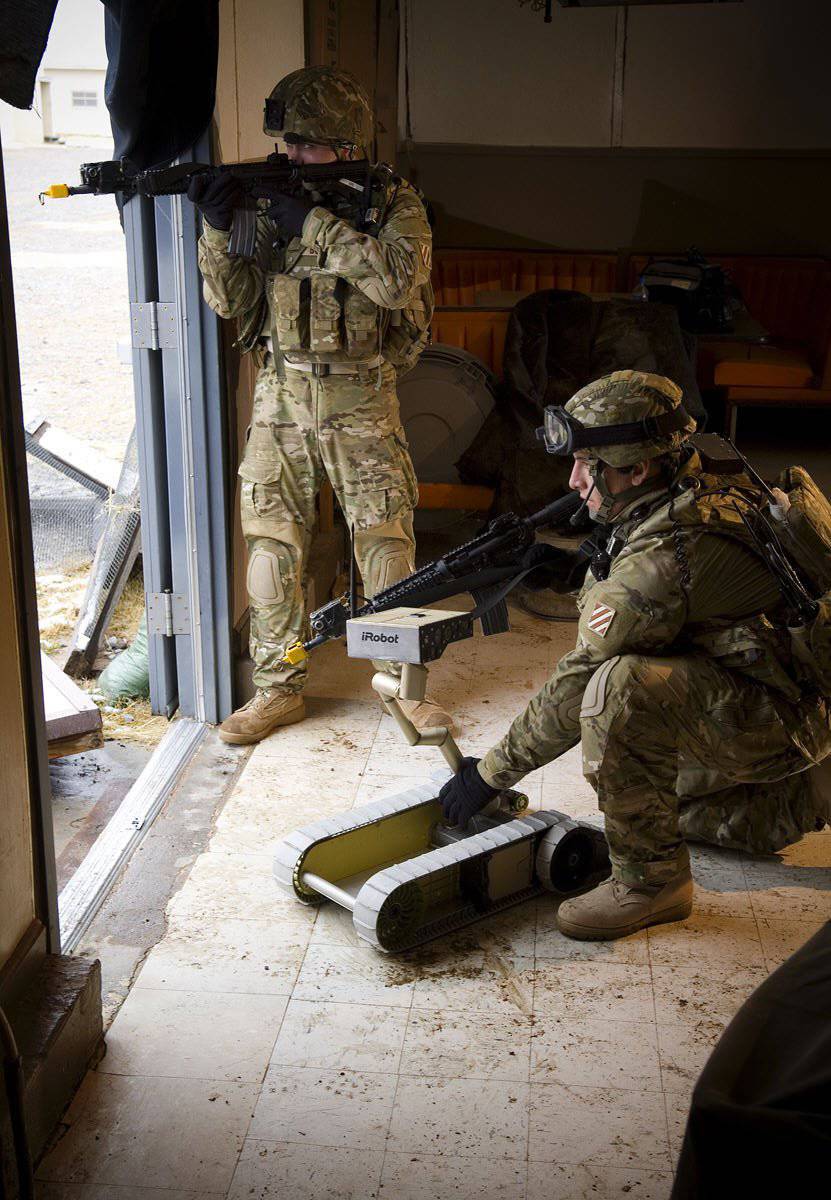
SUGV from iRobot can transfer and save the soldier
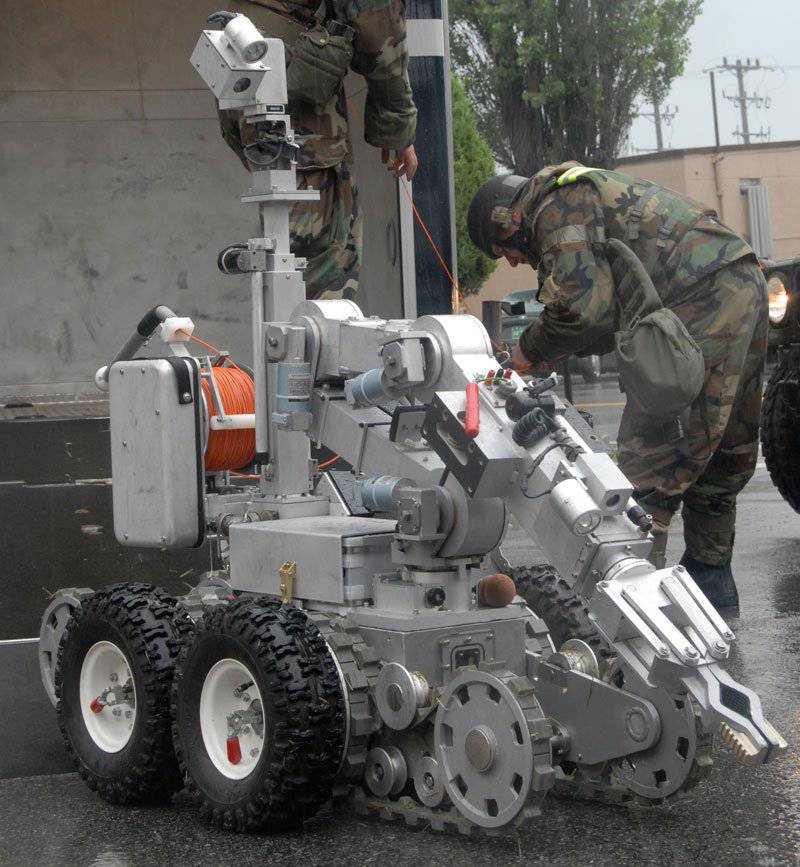
Northrop Grumman Remotec company has a broad line of robots for various applications: military, EOD (AFP), hazardous substances and law enforcement. Family named ANDROS, it includes models HD-1, F6A, Mk V-A1, Mini-ANDROS and WOLVERINE. Explosives on the photo of the work with the model F6A
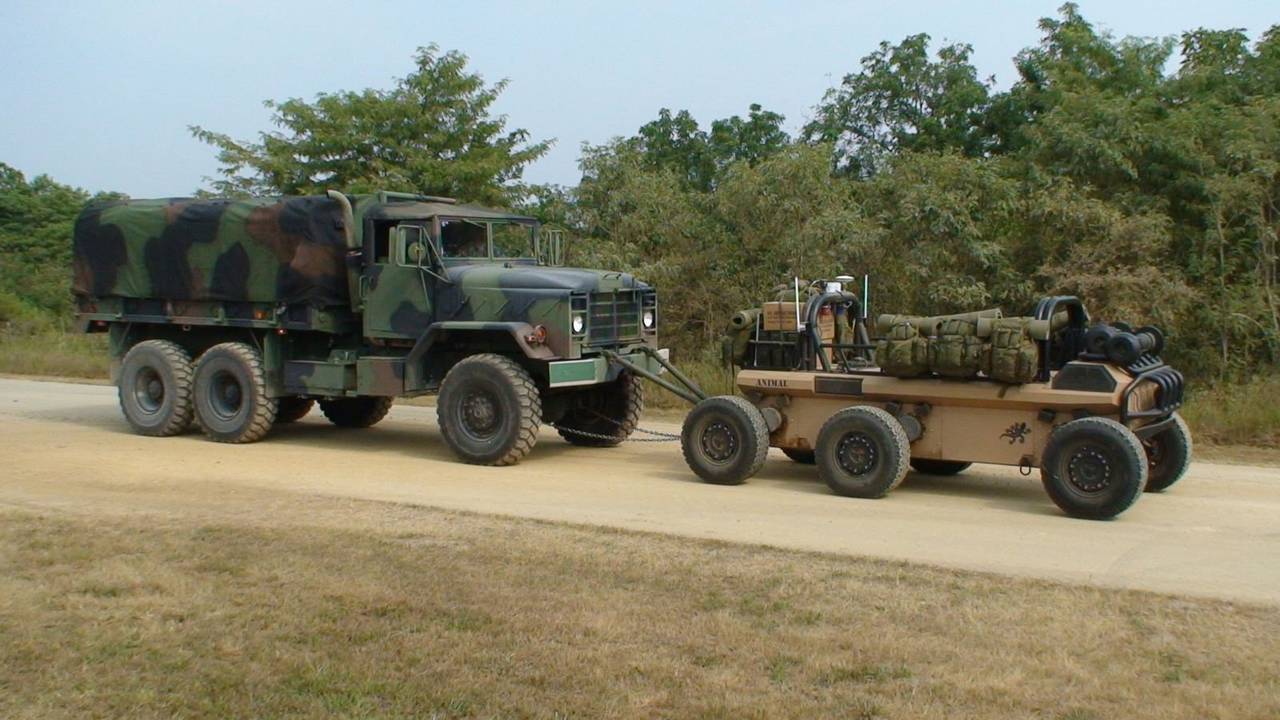
HMP XM1217 MULE-T pulling 5-ton truck during army tests
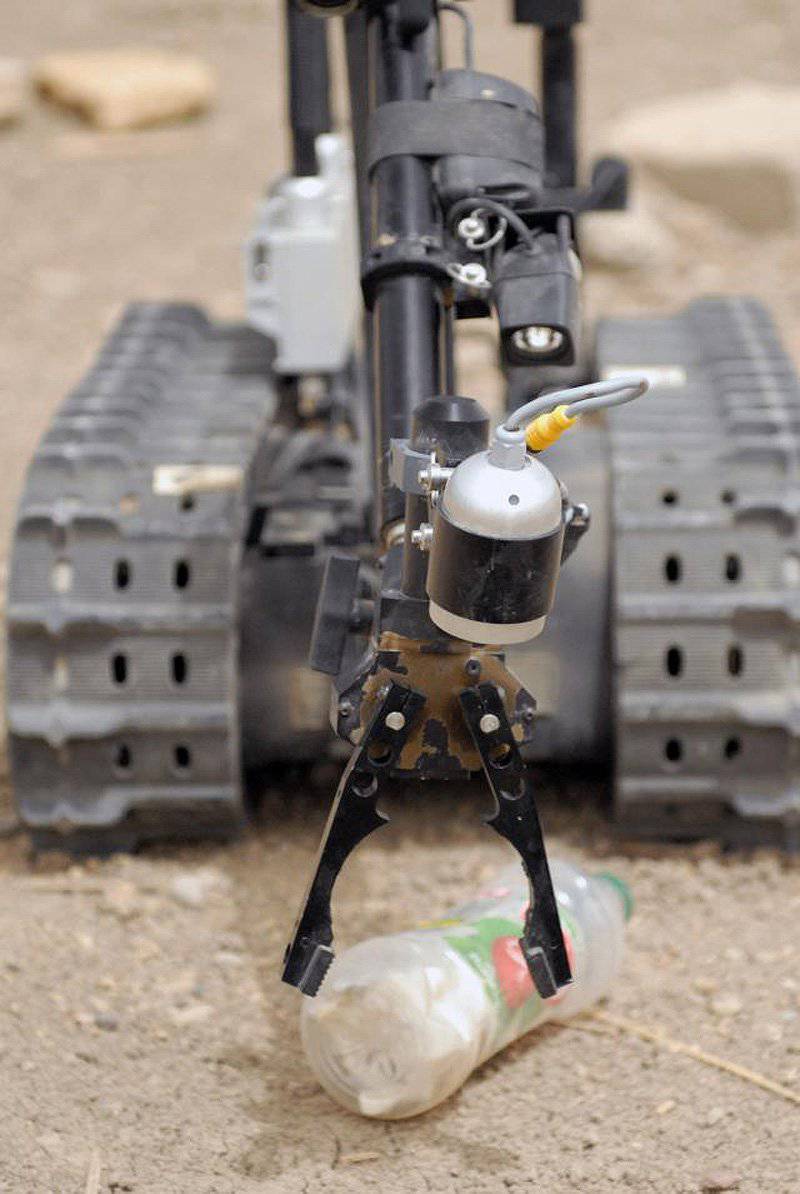
Robot TALON, controlled ordinary 17th Iraqi Army Engineer Regiment, raises his empty bottle capture during joint exercises in southern Baghdad. TALON was developed by Foster-Miller (part of QinetiQ North America) and is widely and successfully used in the operations of explosive ordnance disposal in Iraq and Afghanistan
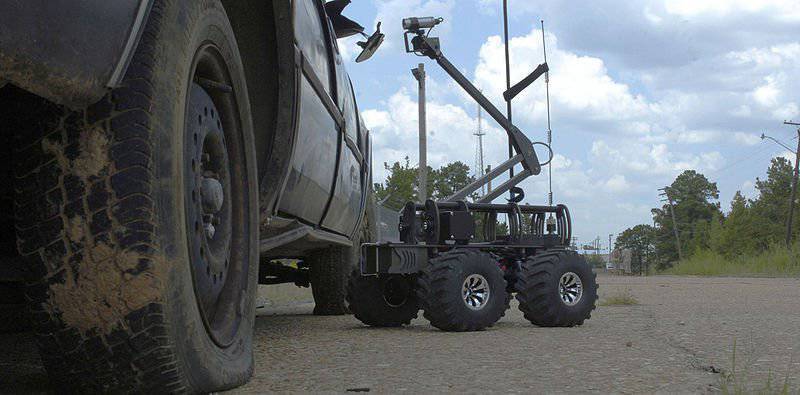
MARCbot IV brings his camera to search for suspicious IED
Continuous development of NMR in the past decade, combined with new technology has created many robots, which saved many lives and helped to achieve operational success in Iraq and Afghanistan. As a result of this timely success on the battlefield, there is an increased interest in the land mobile systems across the spectrum of ground combat missions. Currently, the U.S. is the first developer of military robots, but this leadership is limited, and many other advanced sun complements their arsenals ground robots or planning to do so. Long-term research projects in the U.S. will focus on the development and deployment of ever-increasing amounts of HMP. Study of Congress ("Development and use of robotic and ground mobile robots", 2006) defines HMP special area of interest, and stresses that the military importance of technology in the field of NMR is growing rapidly.
HMP perform two important functions: they expand perception fighter and affect the course of action on the battlefield. The first function HMP - is providing intelligence, surveillance and guidance. They affect the course of action in such problems as fighting improvised explosive devices (IEDs), transportation of arms, equipment and supplies and garbage wounded.
NMR can be either remote controlled (ie sent by a remote operator or decision maker), or autonomous, to a lesser or greater extent (ie, able to work independently as part of its mission and to make independent decisions based on the software). Remote-controlled robots are usually managed by sophisticated wireless communications and, as a rule, require a specially trained operator or group of operators to act in a complex space battlefield. Using radio-NMR, soldiers can peek around corners in urban combat and reduce their risks arising from observation and enemy fire. Basically modern NMR distance control is 2000-6000 m
Ground robots are not cheap and their modern surroundings often requires involvement of more, rather than less number of personnel. Specially trained teams usually have to be able to work with HMP modern generation. As the costs of personnel costs make up a large part of any sun, the sooner HMP can work alone or with a small degree of control or without him, the lower the costs. HMP should eventually replace the soldiers, not increase the need for additional soldiers to work with them. Need for operators and maintenance will only increase with the development of NMR.
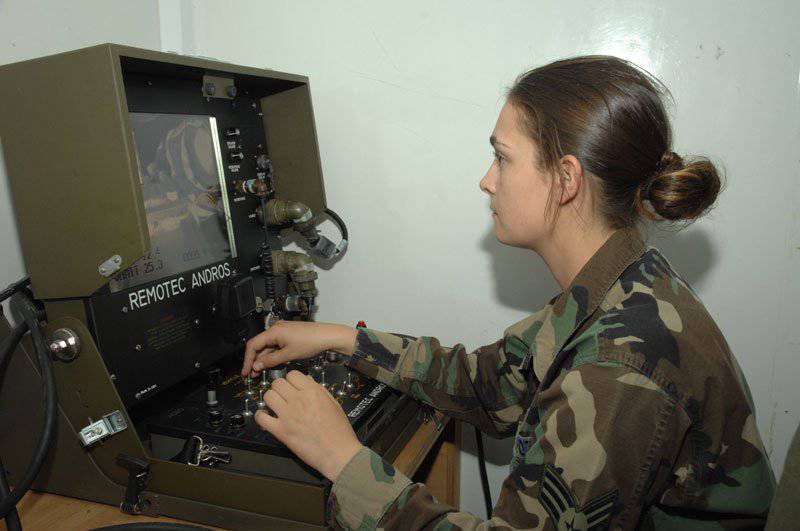
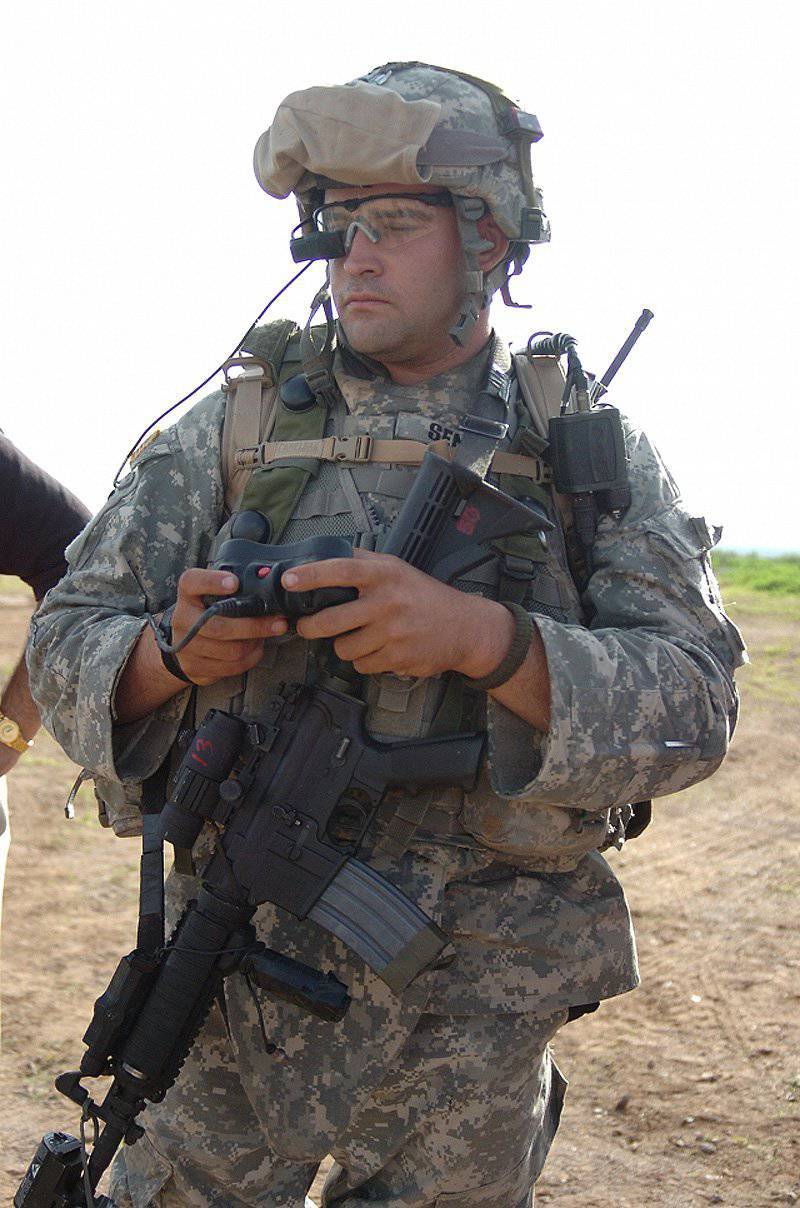
Management of modern NMR requires a personal computer, or at least a laptop (on the photo above for workplace management Remotec ANDROS), but for promising small HMP he will be significantly reduced to a set of portable, composed of a small remote control and display helmet

PackBot from iRobot is ready for the task of countering improvised explosive devices in Iraq. The company has delivered more than 2,525 PackBot HMP series American Sun sixth installment, plus several hundred sets of EOD
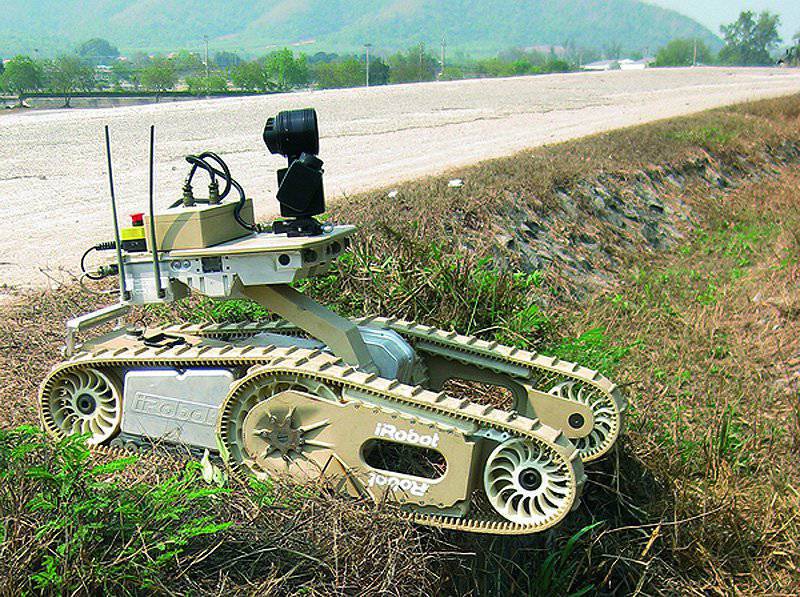
In October 2008, iRobot has received a research contract worth $ 3.75 million from TARDEC to supply two platforms WARRIOR 700. WARRIOR 700 (shown in photo) prohodbn mobility tests on various reliefs, it differs advanced digital architecture that can carry a payload exceeding 150 lbs (68 kg) and configured to perform a variety of hazardous tasks, such as defusing bombs, AFP (APC / car packed with explosives / unexploded ordnance), clearing routes, surveillance and reconnaissance. It can also be used for the export of the wounded from the battlefield or in armed version can destroy targets with a machine gun M240B. WARRIOR 700 is controlled remotely via Ethernet radio at distances of about 800 meters, but he can not make independent decisions
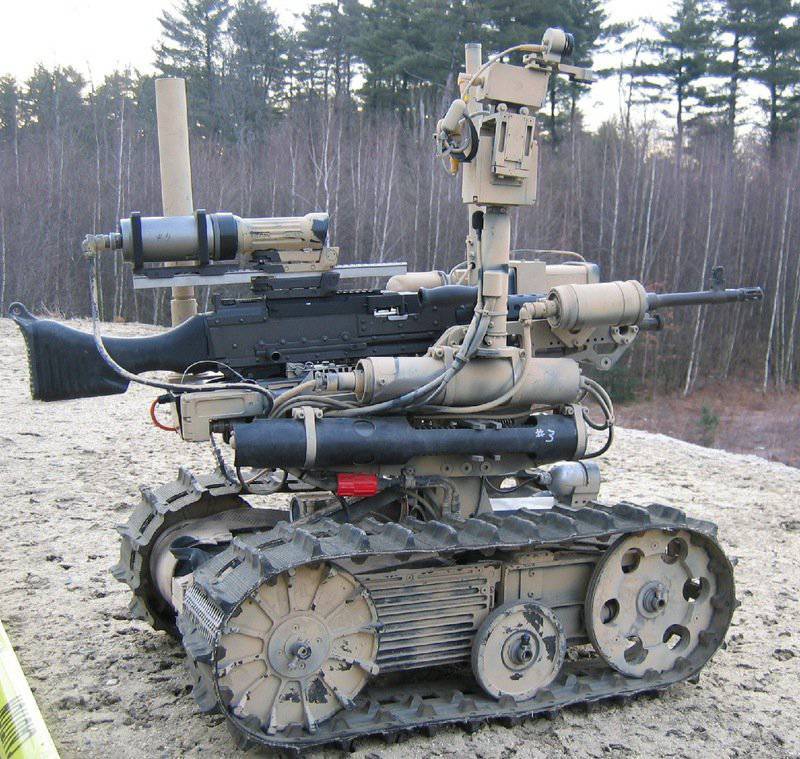
Option SWORD (Special Weapons Observation Reconnaissance Direct-action System - special weapons system, surveillance, reconnaissance for direct exposure) TALON series can have guns or M240 or M249, or Barrett rifle 12.7mm for armed reconnaissance tasks. Different variants of prototypes were delivered in SWORDS Research Center ARDEC arms to assess and then some of them have been deployed in Iraq and Afghanistan. Additional systems are currently being evaluated combat units in the U.S. and other countries
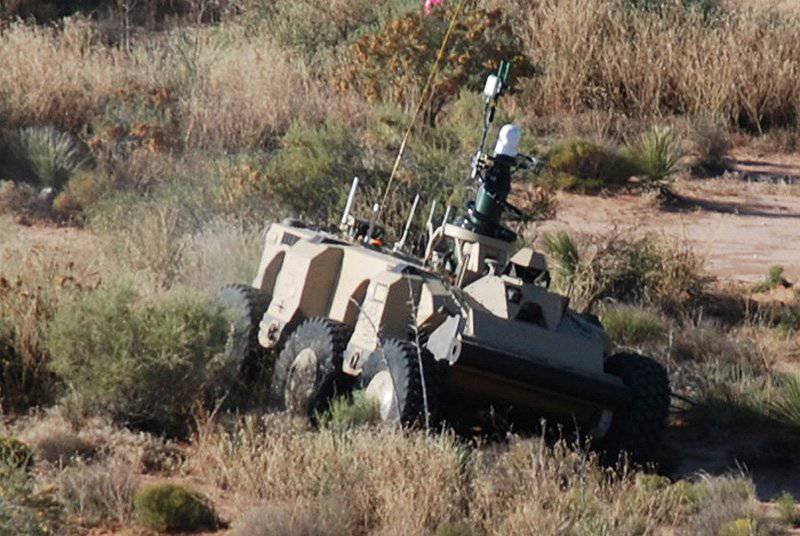
Program on UGCV PerceptOR Integration (UPI) is a national robotics center in order to increase the speed, reliability and autonomous mobile robot navigation ground. Pictured HMP CRUSHER, overcoming difficult terrain during testing at Fort Bliss
HMP and the legacy of the U.S. Army FCS
In the future there will be more natural fighting robots with the best characteristics. The basis of the most ambitious program ever U.S. Army FCS (Future Combat System - Future Combat Systems), for example, were robots as a very important factor to improve the combat capabilities of the army. And although the program "kicked the bucket" in 2009, robots developed within it, apparently survived it and continued their technological development. HMP advantages on the battlefield is so great that the development of remotely operated and autonomous HMP continues despite defense budget cuts. Former director of DARPA Steve Lukasik said: "What is now called promising systems is mainly the addition of robotic ground forces in combat."
Family HMP for "deceased in Bose" FCS program includes small HMP SUGV (Small UGV) and a series of MULE. All together HMP are fundamental to the success of future combat brigades and are important components of fighting on par with other manned weapons and components of the armed forces.
Small Ground Mobile Robot XM1216 SUGV (Small Unmanned Ground Vehicle) is a lightweight, wearable system capable of operating in urban areas, tunnels, sewers and caves or other areas that are either not available or too dangerous for soldiers. SUGV performs surveillance and reconnaissance, giving soldiers enter into dangerous areas. It weighs less than 30 pounds (13.6 kg) and carries up to 6 pounds (2.7 kg) payload. This load may include manipulator arm, fiber optic cable, the electro / infrared sensor, laser rangefinder, laser pointer, automatic setting of urban unattended ground sensors and chemical / radiological / nuclear detector. Transfer System operated by one soldier and has a variety of operator control units, including portable controller, main wearable controller and advanced wearable controller. SUGV manage remotely and not autonomous.
0
4.4K
1
Thread Digembok
Urutan
Terbaru
Terlama
Thread Digembok
Komunitas Pilihan